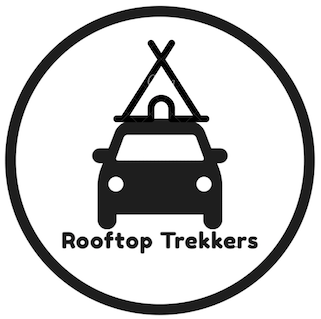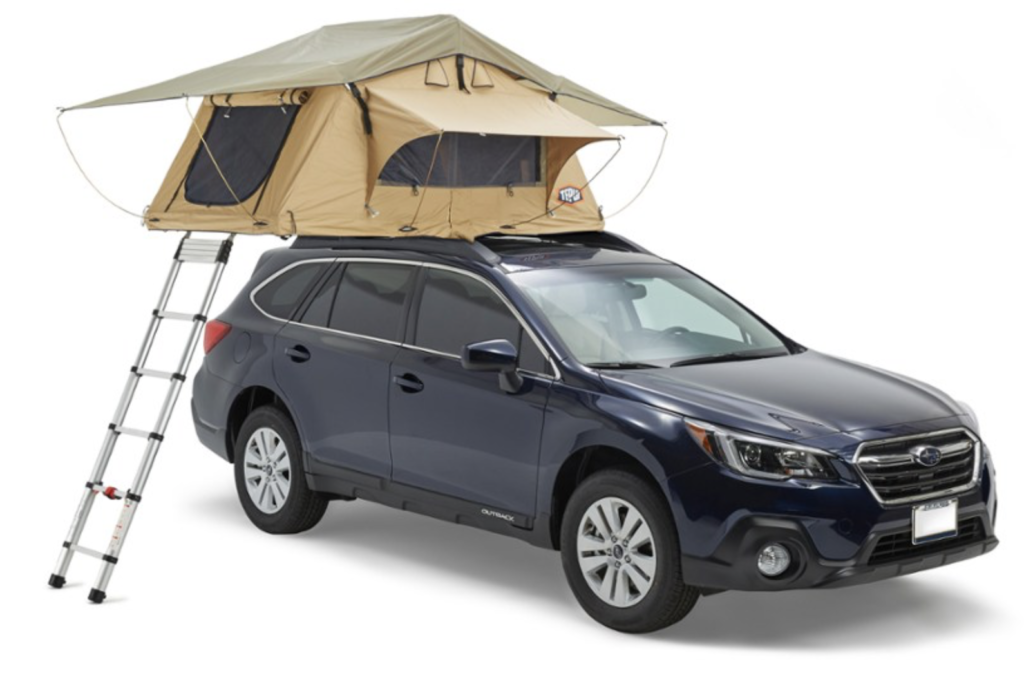This post contains affiliate links.
Can’t decide between a hard shell roof top tent or a soft one? Looking for a hard shell vs soft shell roof top tent comparison? We’ll explain the pro’s and con’s of each, so you can decide which one meets your needs.
What's the difference?
Hard shell roof top tents are relatively new to the market and offer a wide variety of both pro’s and cons. They have a fiberglass outer shell that pop’s up or folds out to create your tent.
Soft Shell roof top tents have been around for much longer. They take longer to set up & tear down, but are typically less expensive and more spacious.
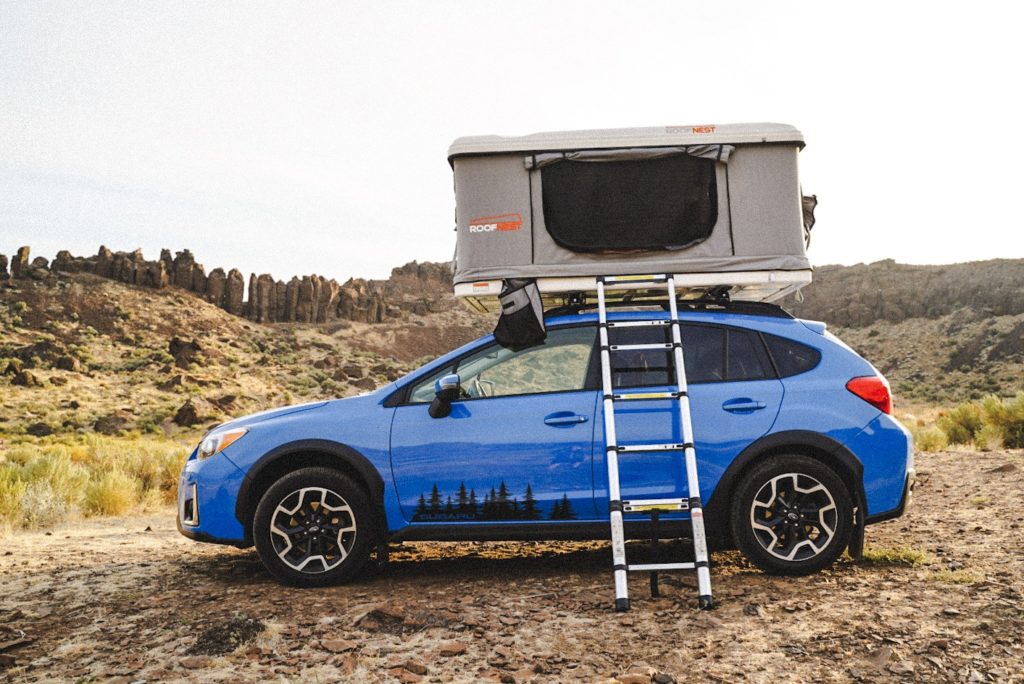
Why a hard shell roof top tent?
Hard Shell Roof Top Tent Positives
Ease of set up: A hard shell roof top tent really shines when it comes to set up and tear down. They easily pop up in under 60 seconds by simply unbuckling the latches and pressing up on the fiberglass. Gas struts (or even electric in some cases), will effortlessly open your tent,
They can store your bedding: You can leave all blankets, pillows, and even your teddy bear inside of a hard shell roof top tent. If this doesn’t scream convenience, I don’t know what does. This allows you to set up camp even quicker and spend more time enjoying the outdoors. In addition, the bedding up top leaves more room in your vehicle.
You don’t have to deal with “the bag” or tent poles: When I talk with soft shell roof top tent owners, they often complain about the bag that zips around their tent when it’s folded up. It can become dirty, messy, and a hassle. Hard shell tent’s don’t have this problem.
You only take up 1 parking spot: If you’re going to pop the top at the park or beach, it’s nice to only need to find 1 parking spot. Soft shell roof top tents will fold out to take up 2 spots, and you’ll look like a jerk if it’s a busy day at the park.
They are aerodynamic: Hard shell roof top tent manufacturers are learning how to make these tents even more aerodynamic than ever. This cuts down on wind drag, noise, and increases your MPG’s. Check out the top 5 hard shell roof top tents of 2020 here.
Why a soft shell roof top tent?
Soft Shell Roof Top Tent Positives
They are spacious: These tents fold out and virtually double in size. This means they are roomier and can sometimes sleep more people if weight restrictions allow.
They are inexpensive: In comparison to hard shell roof top tents, soft shell tents are inexpensive. Being more affordable allows you to spend your money elsewhere…like other gear or more trips.
The tent serves as an awning: On a rainy or sunny day, you can sit under your folded out portion of tent and use it as an awning. You can also add an annex, which brings me to my next point….
You can add an Annex: An annex is basically a canopy that hangs down from the folded out portion of the tent. It serves as a private area to relax, shower, or hide from the elements.
You can open all of your doors: Depending on your set up, a hard shell roof top tent ladder can block door access. The soft shell ladder sits far away and will not block your car door.
Negatives of Hard Shell Roof Top Tent's
Hard Shell Roof Top Tent Negatives
They can reduce MPG’s: While these tents are aerodynamic, they can reduce MPG’s much like soft shells.
They are expensive: Hard shell roof top tent’s are more expensive than soft shells.
They can limit door access: With the ladder set up, they can limit door access. Soft shells typically don’t have this problem.
They are less spacious: These tents typically sleep 2, however newer models such as the Roofnest Condor can fold out to sleep more.
Negatives of Soft Shell Roof Top Tent's
Soft Shell Roof Top Tent Negatives
They can reduce MPG’s: These tents are like a brick on your roof. They can reduce MPG’s and add wind drag.
They take time to set up: Soft shell roof top tent’s take longer to set up/tear down and are often more complicated than hard shells.
Tent material is thinner: The tent material is much like a normal tent. This means it’s more likely to rip and may not last as long.
You can’t store your bedding: You’ll have to add and remove your bedding each time you set up and tear down.
Final Thoughts
Deciding between a hard shell vs soft shell roof top tent is no easy choice. Now that you’re informed, you can make the right choice. If you value convenience and ease of set up, a hard shell is the best option. If you’re looking for more space, are trying to save cash, and don’t mind the extra set up/tear down time, then a soft shell is a good choice. We hope this overview helped with your decision. Comment below and let us know what tent model you decided on!
Thanks for reading this post. We hope it gave you some ideas on which tent to purchase. If you’re still in the market for a rooftop tent, consider ordering here. Read here on why we love ours. Life’s better on top!
Like this post? Pin it to Pinterest!

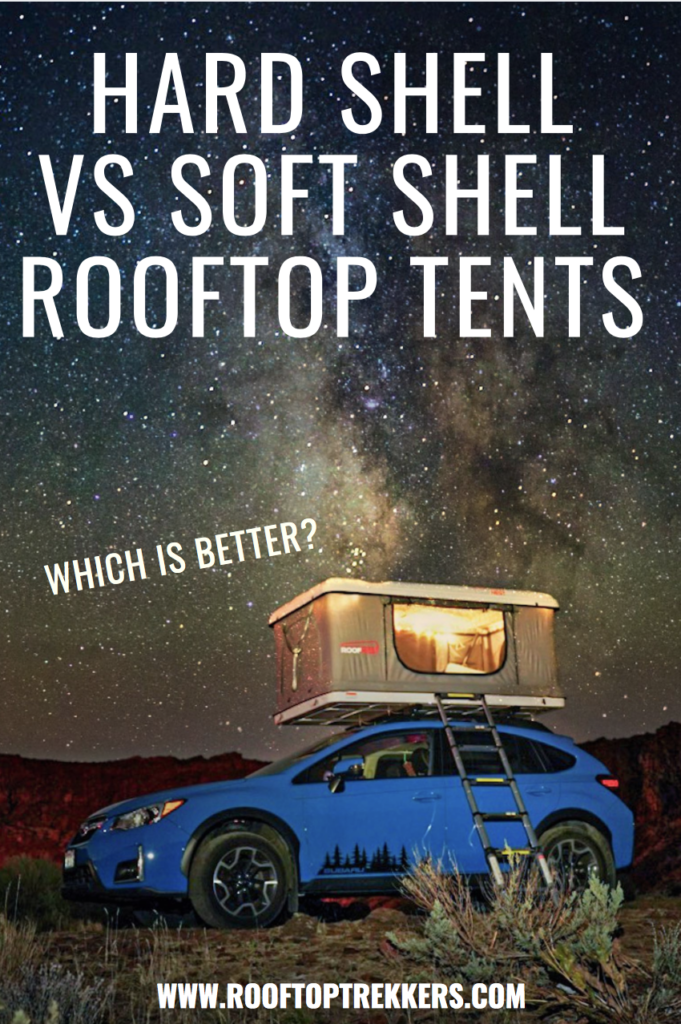
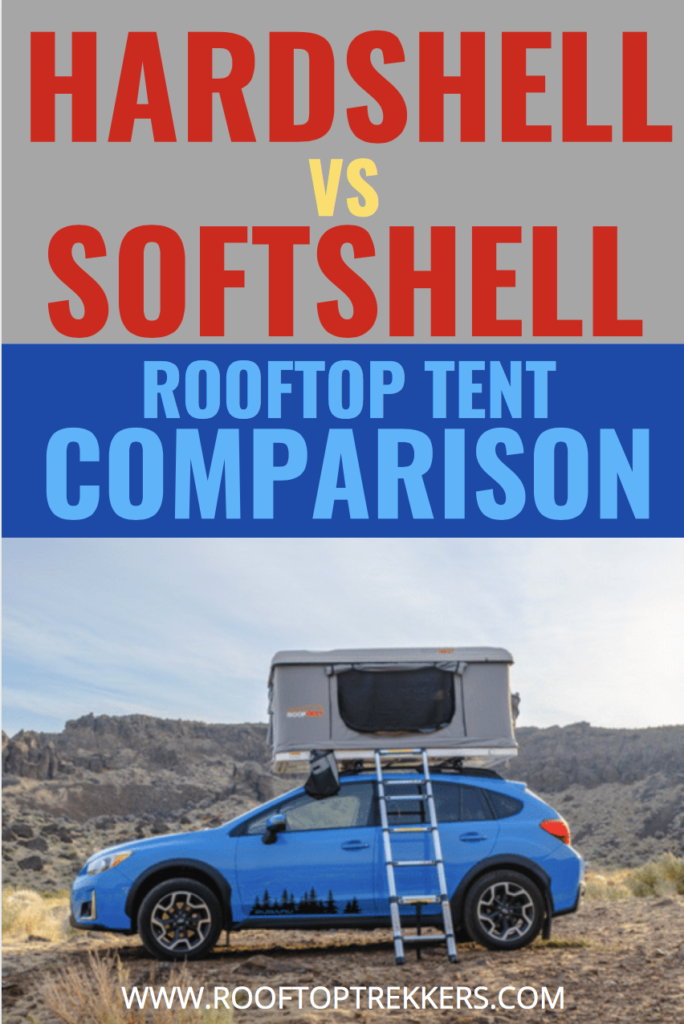
About us.

